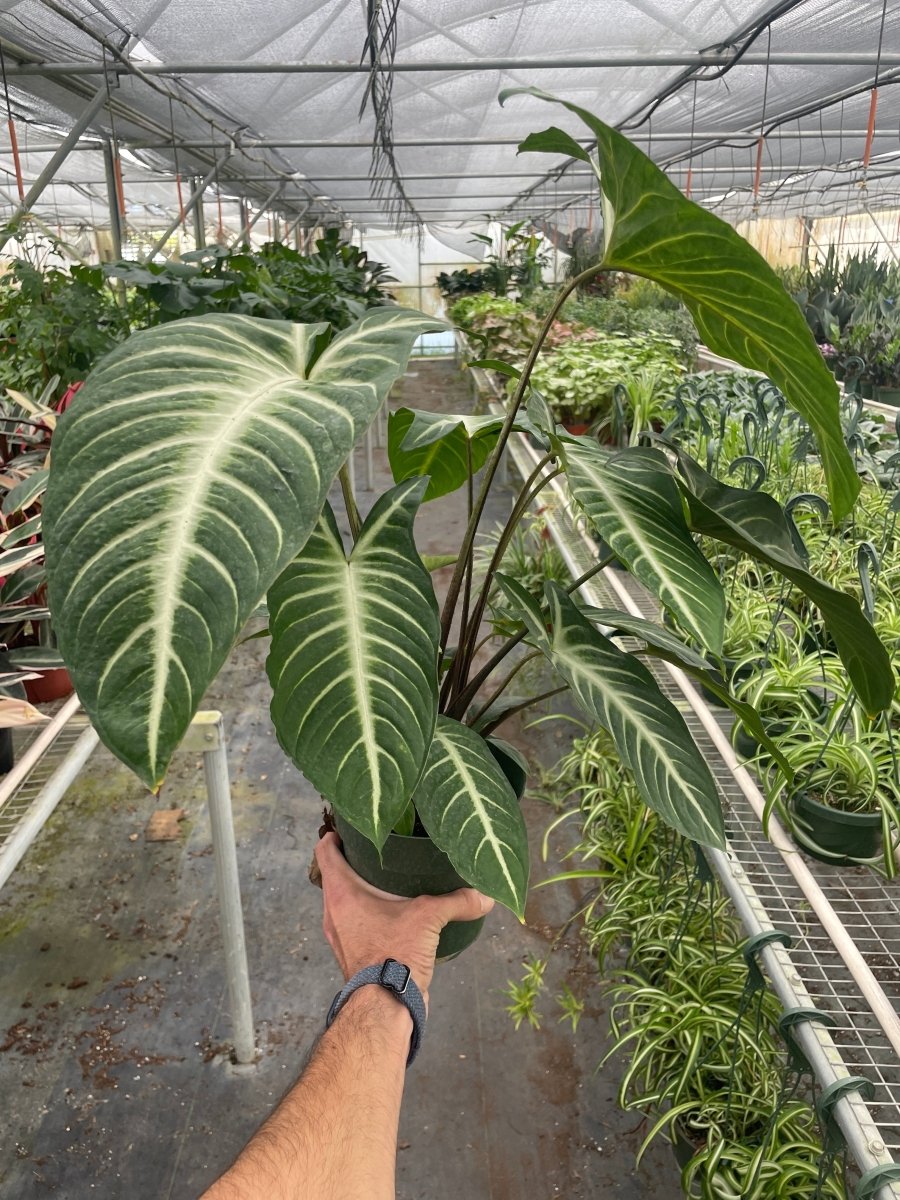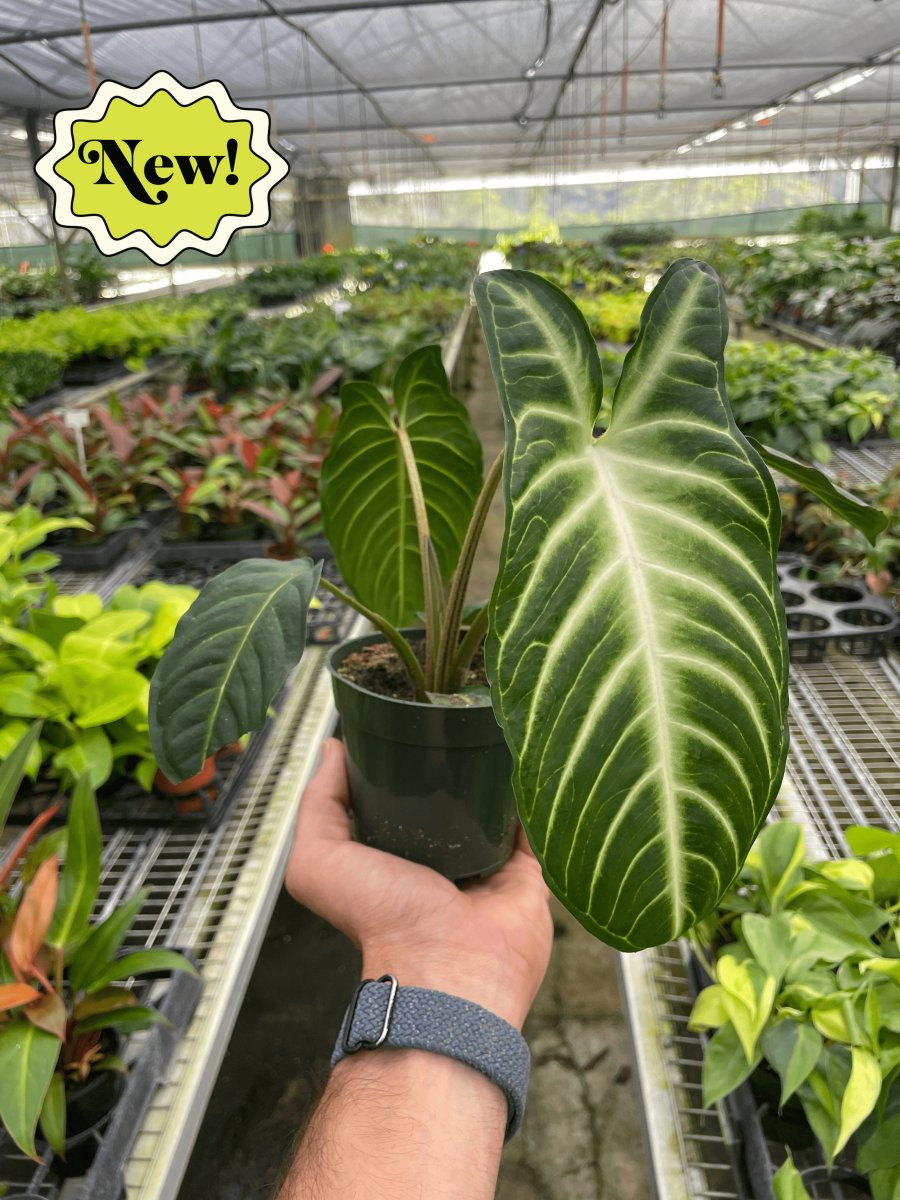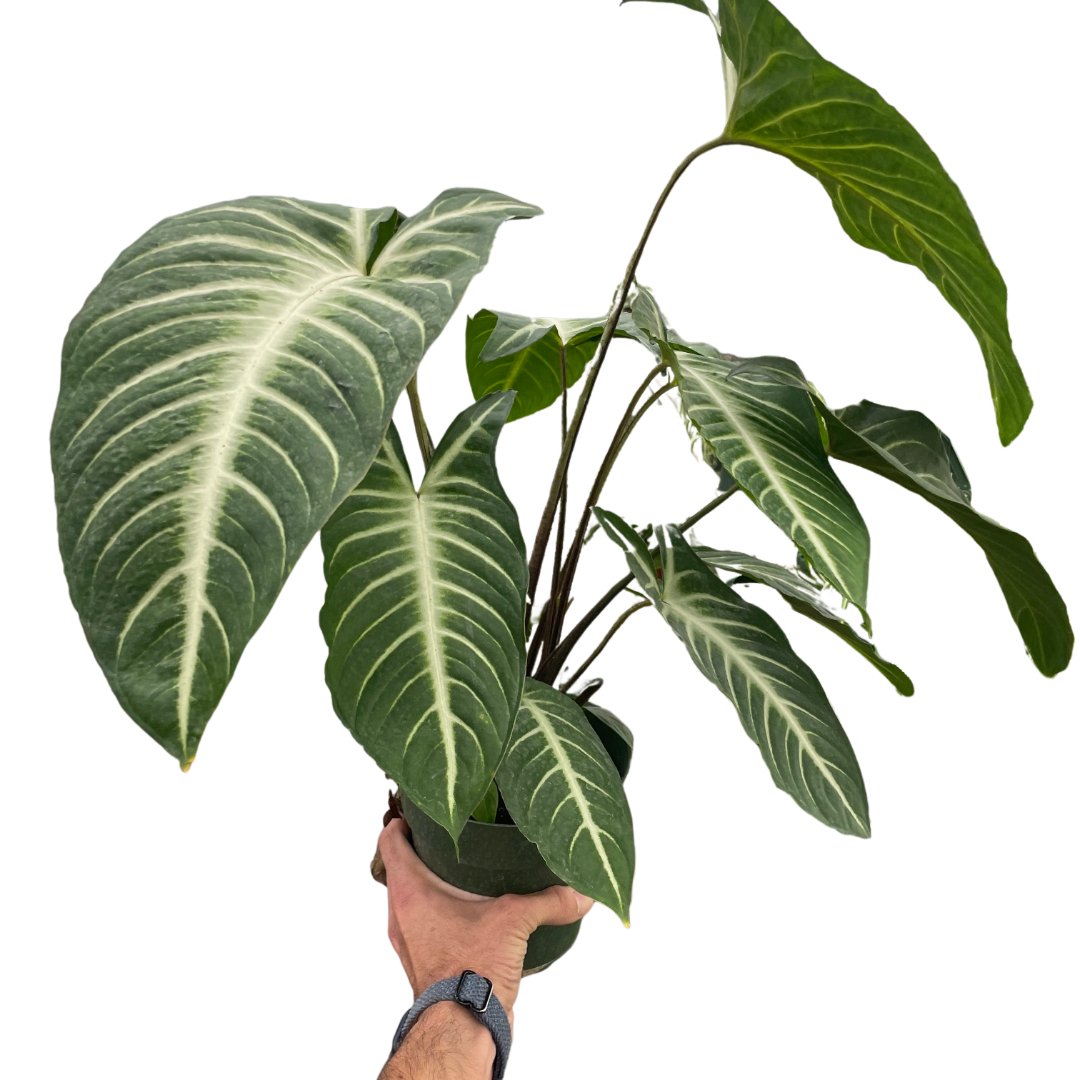Xanthosoma 'Angel Wing'
Xanthosoma 'Angel Wing'
Free Shipping on All Plants
Xanthosoma 'Angel Wing', scientifically Xanthosoma lindenii magnificum, formerly Alocasia lindenii magnificum, is a striking foliage plant recognized for its large, heart-shaped leaves with prominent veins and a glossy texture. The foliage of 'Angel Wing' ranges in color from deep green to shades of burgundy, adding a dramatic flair to indoor and outdoor spaces alike. This Xanthosoma variety grows in an upright habit and can reach heights of several feet when fully mature.
Botanical & Common Names
Botanical & Common Names
Botanical: Xanthosoma lindenii magnificum
Common: Angel Wing Xanthosoma, Angel Wing Alocasia, Angel Wing Plant, Variegatum Monstrosum, Variegated Elephant Ear Plant, Variegated Tannia Plant, Variegated Malanga Plant
Necessary Care Tips
Necessary Care Tips
- Light: Bright Indirect
- Ideal Temperature: 65-75°F
- Humidity: High
- Water: When the top inch of soil is dry
- Fertilize: Once a month during the growing season with a balanced fertilizer diluted to half strength
- Preferred Soil: Well-Draining Potting Mix
Advanced Care Tips
Advanced Care Tips
- Xanthosoma go dormant in winter, so don't be alarmed if growth slows down during this period.
- To encourage your Xanthosoma to flower, provide it with optimal conditions and allow it to rest during the winter period.
- If your Xanthosoma does flower, it's a sign that the plant is healthy and happy. However, if you are not interested in the flowers, you can simply remove them which will help redirect the plants energy into producing new leaves.
Plant Insights
Plant Insights
- Member of the Araceae family, also known as the Arum family, which is a large family of flowering plants that includes over 3,700 species.
- Xanthosoma are native to tropical and subtropical regions oof Asia, the Pacific Islands, and Eastern Australia.
- While Xanthosoma are grown for their beautiful leaves, they can also produce flowers that are not very showy and non-fragrant.
- This plant has air purifying qualities and is believed to remove indoor pollutants like formaldehyde and benzene.
- Some Xanthosoma species are cultivated for their edible tubers (known as malanga, tannia, yautia, and other names in various cultures).
- Often mistaken for an Alocasia although they share many similarities from apperance, to growth habit, to native habitats. Their differences are leaf shape and texture: Alocasia leaves are typically more arrow or heart-shaped and can have a glossy or waxy texture. Xanthosoma leaves tend to be more rounded or sagittate (arrowhead-shaped). Additionally, Alocasia plants often have more pronounced, contrasting veins compared to Xanthosoma. Lastly, while both genera produce inflorescences that follow the typical arum family pattern of a spathe and spadix, there are subtle differences in their structures and appearances that can help in their identification.
- Unsafe / Toxic
- Medium Maintenance
Couldn't load pickup availability



Subscribe to our emails
Be the first to know about new collections and exclusive offers.


